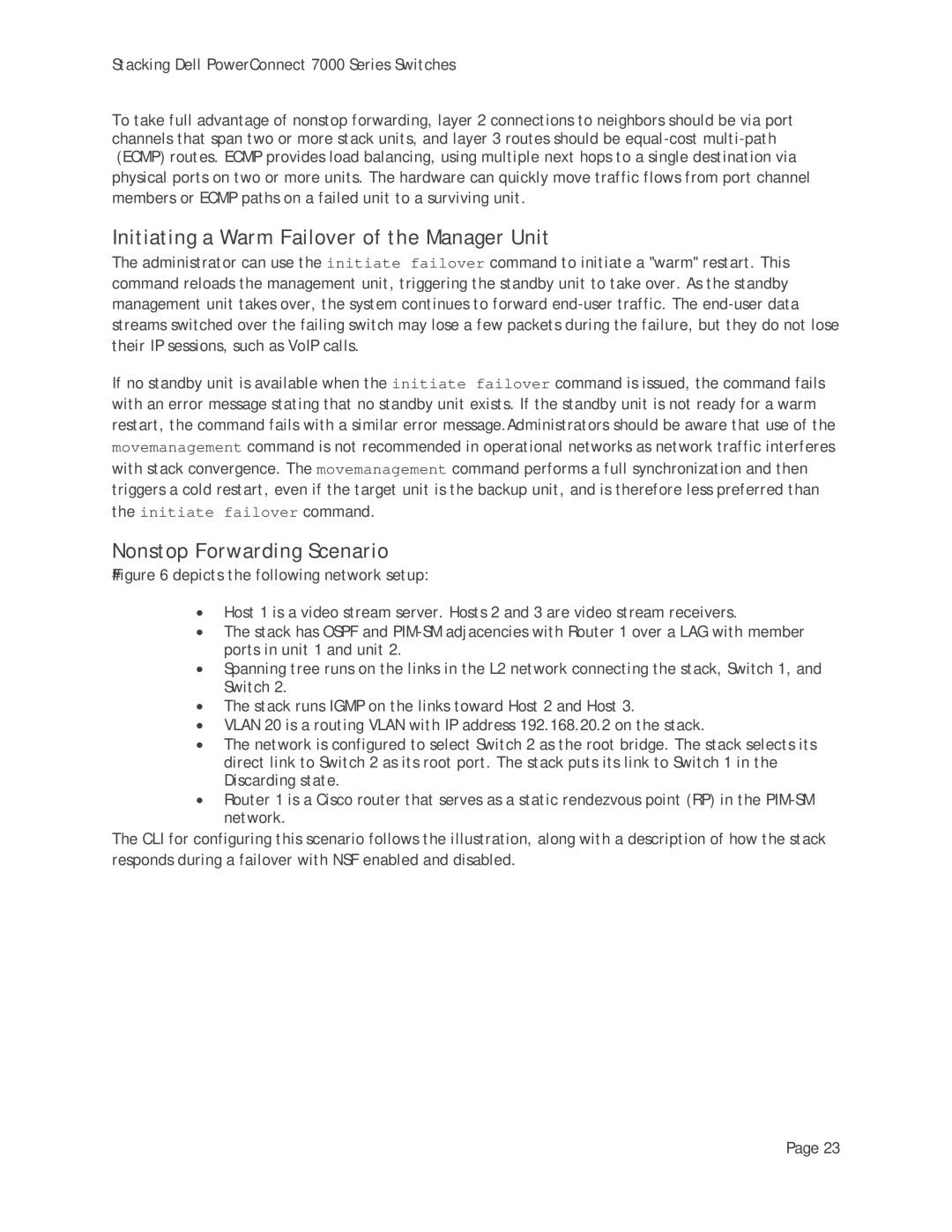Stacking Dell PowerConnect 7000 Series Switches
To take full advantage of nonstop forwarding, layer 2 connections to neighbors should be via port channels that span two or more stack units, and layer 3 routes should be
physical ports on two or more units. The hardware can quickly move traffic flows from port channel members or ECMP paths on a failed unit to a surviving unit.
Initiating a Warm Failover of the Manager Unit
The administrator can use the initiate failover command to initiate a "warm" restart. This command reloads the management unit, triggering the standby unit to take over. As the standby management unit takes over, the system continues to forward
If no standby unit is available when the initiate failover command is issued, the command fails with an error message stating that no standby unit exists. If the standby unit is not ready for a warm restart, the command fails with a similar error message.Administrators should be aware that use of the movemanagement command is not recommended in operational networks as network traffic interferes with stack convergence. The movemanagement command performs a full synchronization and then triggers a cold restart, even if the target unit is the backup unit, and is therefore less preferred than
the initiate failover command.
Nonstop Forwarding Scenario
Figure# 6 depicts the following network setup:
•Host 1 is a video stream server. Hosts 2 and 3 are video stream receivers.
•The stack has OSPF and PIM-SM adjacencies with Router 1 over a LAG with member ports in unit 1 and unit 2.
•Spanning tree runs on the links in the L2 network connecting the stack, Switch 1, and Switch 2.
•The stack runs IGMP on the links toward Host 2 and Host 3.
•VLAN 20 is a routing VLAN with IP address 192.168.20.2 on the stack.
•The network is configured to select Switch 2 as the root bridge. The stack selects its direct link to Switch 2 as its root port. The stack puts its link to Switch 1 in the Discarding state.
•Router 1 is a Cisco router that serves as a static rendezvous point (RP) in the PIM-SM network.
The CLI for configuring this scenario follows the illustration, along with a description of how the stack responds during a failover with NSF enabled and disabled.
Page 23
